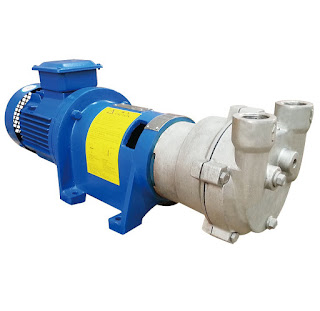Pneumatic conveying principle of Roots blower
ABSTRACT: The whole system consists of Roots blower, manual plug-in valve, rotary feeding device, Venturi spray device, conveying pipeline, pipeline shunt valve, and storage bin, top dedusting device, electrical control system and related auxiliary settings.
Introduction of pneumatic conveying system:
I. Working Principle of the System
The barotropic dense phase pneumatic conveying system uses the barotropic air flow generated by Roots blower as the power to convey the material continuously supplied by the rotary feeder from the hopper to the subsequent storage warehouse. Storage warehouse is equipped with top dedusting device to separate material and gas transported to storage warehouse.The whole system is composed of Roots blower, manual plug-in valve, rotary feeding device, Venturi jet device, conveying pipeline, pipeline shunt valve, storage bin, top dedusting device, electrical control system and related auxiliary settings.
When the system works, the Roots blower is activated to generate high-pressure columnar air flow. The high-pressure columnar air flow passes through the Venturi ejector pump, which generates a negative pressure inside, so that the material supplied by the rotary feeder is sucked into the venturi ejector nozzle in time. Material is transported through pipeline to storage bin. Then the top dust collector installed on the top of the storage warehouse separates the material from the conveying airflow, and the remaining airflow is discharged out of the room in time to avoid too much dust on site.
II. Equipment Maintenance
1. Roots blower: Roots blower should add corresponding lubricating oil to bearings in time after using for a certain time, and change gear oil in time after using for a period of time.
2. Pipeline shunt valve: When it operates, the power generated by the cylinder causes the ball valve to change direction and completes the corresponding pipeline reversing function. When it reverses, the corresponding conveying process must be stopped, so as to avoid the conveying process being carried out, and make it change direction suddenly. Thus, the reversing valve is subject to greater impact, easy to jam, and the damage to the cylinder is also greater. If the action of the cylinder fails, the corresponding air passage should be checked to see if it is unobstructed and whether the air pressure meets the corresponding working requirements.
3. Rotary feeder: When it works, the power generated by the motor drives the internal supply blade to rotate, and continuously conveys the upper material to the lower part. The clearance between the blade and the shell is less than 0.1mm, and the sealing performance is excellent, and it is made of wear-resistant material. If the wear-resistant sheet has been worn out for a long time, which affects its work, the original wear-resistant sheet should be removed, and new wear-resistant sheet should be replaced to keep the pneumatic seal throughout its work.
4. The connection of the pipeline is firm. After the installation of the whole pipeline, the corresponding pressure test should be done to confirm that there is no air leakage and gas escape at the connection.
5. Manual slide valve should keep flexible action, regularly remove the upper cover plate, add lubricant to the corresponding screw rod, remove the accumulated material on the screw rod, and make it rotate smoothly.
6. Dust collector on warehouse top: After long-term work, the dust bag should be replaced in time to prevent the effect of the dust bag from being blocked.
Roots Blower Price
Vacuum Pumps: Uses and Applications




评论
发表评论